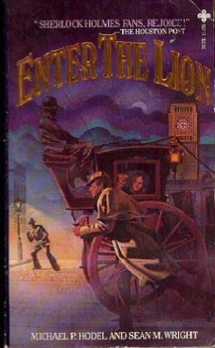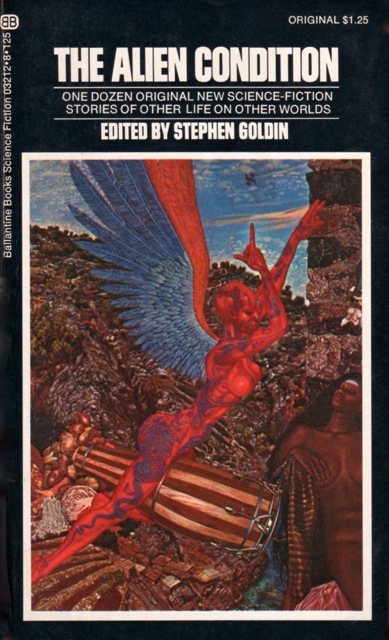Michael P. Hodel
Author, Essayist, Editor, Radio Host
Born July 12, 1939
Died May 6, 1986
Author, Essayist, Editor, Radio Host
Born July 12, 1939
Died May 6, 1986
Who killed Elizabeth Short has been a mystery for nearly seventy years. One of the suspects was Dr. George Hill Hodel, Jr. (1907-1999). Hodel's son, Steve Hodel, has been investigating the case for more than a decade. He believes that his father killed the woman called the Black Dahlia and deposited the parts of her mutilated body in a vacant lot in Los Angeles early in the morning of January 15, 1947. In their book Exquisite Corpse: Surrealism and the Black Dahlia Murder (2006), Mark Nelson and Sarah Hudson Bayliss suggest that the murder was connected to the art movement of their title. Salvador Dali (1904-1989) is probably the most well-known surrealist. Though primarily a painter, Dali was also a moviemaker. His film Un Chien Andalou (1929) is filled with images of mutilation and death. Man Ray (1890-1976) and Denise Bellon (1902-1999) were also surrealists, primarily photographers. They, too, employed imagery of death, dismemberment, mutilation, and, in their use of manikins, lifelessness. There are indications that Elizabeth Short's murderer intended to make of her body and the scene where it was found a kind of artistic tableau. Dr. Hodel, one of the suspects in the killing, then and now, knew Man Ray and had an interest in surrealist photography.
George Hodel fathered eleven children by five women. He had four sons with Dorothy Harvey Huston, ex-wife of movie director John Huston. Steve Hodel was born in November 1941. (He had a twin brother who died in infancy.) Kelvin Hodel, born in October 1942, is the youngest. The oldest boy was Michael P. Hodel, born on July 12, 1939. According to Steve Hodel, his father and John Huston had questions about Michael's parentage. Finally, Dorothy Harvey Huston told her ex-husband, "Forget it, John, he's not your son." (1)
Tamar Hodel, an older half-sister of the Hodel boys, remembered her father's cruelty towards them. "Michael got it the worst," she said, speaking to Steve Hodel. "It broke my heart to see how he treated you three. Especially how he was with Mike." Steve went in the Navy and became a Los Angeles police detective. In contrast, Michael turned to "his beloved books" (2) and, like his mother, "a script and radio writer," became a writer. (3)
Throughout his working life, Michael Hodel read fantasy and science fiction, wrote about fantasy and science fiction, and talked about fantasy and science fiction. He had a radio show called Hour 25, and it ran on station KPFK in Los Angeles for twenty-eight years. Mitchell Harding (né Eugene Loring Ware), Katherine Calkin, Mike Hodel, and Michael's wife, Terry Hodel (1937-1999), created the show. It went on the air in January 1972 with Ms. Calkin as host. Michael Hodel came on a few months later and served as host from 1972 to 1986. His co-hosts were Katherine Calkin (1972-1976), Mitchell Harding (1972-1981), and Mel Gilden (1981-1986). Late in his tenure, Hodel became ill and was unable to continue. He was succeeded by Harlan Ellison.
In addition to spending more than a decade on the air and interviewing such luminaries as Theodore Sturgeon, Philip K. Dick, and Harlan Ellison, Michael Hodel wrote for fantasy and science fiction magazines and fanzines. His credits from The Internet Speculative Fiction Database:
- "Change of Hobbit Benefit" (essay) in Locus #151 (Dec. 1, 1973)
- "The Group Mind" (essay) in Transmission (Summer 1980)
- "Second Chance" (short story) in Fantasy Book (Feb. 1982)
- "Negotiations at a Lower Level" (short story) in Fantasy Book (Nov. 1982)
- "Native Tongue" by Suzette Haden Elgin (book review) in Weird Tales (Fall 1984)
- "The Businessman: A Tale of Terror" by Thomas M. Disch (book review) in Weird Tales (Fall 1984)
- "The Ghost Light" by Fritz Leiber (book review) in Weird Tales (Fall 1984)
- "The Mainstream That Through the Ghetto Flows: An Interview with Philip K. Dick" (1976) in Missouri Review (Winter 1984)
The version of Weird Tales to which he contributed was published by The Bellerophon Network and edited by Gordon M.D. Garb in 1984-1985. There were only two issues in that incarnation of the magazine. They are exceedingly rare.
In 1979, Hawthorn Books published Enter the Lion: A Posthumous Memoir of Mycroft Holmes"edited" by Michael P. Hodel and Sean M. Wright. It was one of a number of books about Arthur Conan Doyle's characters issued in the 1970s and beyond, including The Seven-Per-Cent Solution (1974) and The West End Horror (1976) by Nicholas Meyer and The Last Sherlock Holmes Story (1979) by Michael Dibdin. The Last Sherlock Holmes Story involves Jack the Ripper, who, like the Black Dahlia killer, mutilated and dismembered his victims.
Enter the Lion was well received. Kareem Abdul-Jabbar read it and liked it. Moreover, he "realised [sic] more could be done with this 'older, smarter'" brother of Sherlock Holmes. (4) In collaboration with screenwriter Anna Whitehouse, Mr. Abdul-Jabbar wrote a new novel of Mycroft Holmes called Mycroft Holmes. The book was released in late 2015 to good reviews.
"Mike died unexpectedly in May, 1986 at the relatively young age of 47," writes Steve Hodel. "His death from lung cancer, followed hard upon the death of our mother, just a few years prior." (5) In 1925, Ted Le Berthon interviewed Michael and Steve's father for a Los Angeles newspaper. In 1932, Le Berthon contributed "Demons of the Film Colony," an unrelated piece, to Weird Tales. In 1947, someone killed Elizabeth Short and left her body in an empty lot in Los Angeles. She had hoped to be in movies. Instead she was mutilated and murdered by a man who might best be described as a demon and who may very well have had connections to the "film colony" of southern California. In 1963, Steve Hodel joined the Los Angeles Police Department. In 1972, Michael Hodel began hosting a radio show about fantasy and science fiction. Probably because of that, he was in a position to review books for Weird Tales in 1984. Michael Hodel died in 1986, George Hodel in 1999. After his father's death, Steve Hodel put his experience with the LAPD to use in investigating his father's role in the Black Dahlia case. He believes he has solved it.
I tell you, this is a strange world we live in. (6)
Notes
(1, 2) Quotes from Black Dahlia Avenger: The True Story, unpaginated online version.
(3) "Social Activities: Palm Valley,"Desert Sun, Palm Springs, October 6, 1950, page 7, here.
(4) Quoted in "Basketball Veteran Kareem Abdul-Jabbar Pens Story of Sherlock Homes's [sic] Brother" by Alison Flood in The Guardian, September 24, 2015, here. By the way, that's a British paper that misspelled Holmes' last name.
(5) From Steve Hodel's blog, here.
(6) Two final connections: First, Tony "The Hat" Cornero is in Steve Hodel's book. He also had a connection to Volney G. Mathison, who also contributed to Weird Tales and through his association with L. Ron Hubbard was connected to other strange happenings in Pasadena, George Hodel's home city. Second, George Hodel was tried for a crime against his daughter, essentially incest. In Chinatown (1974), Hodel's friend John Huston famously played a man who also had an incestuous relationship with his daughter.
 |
| Michael P. Hodel collaborated with Sean M. Wright on Enter the Lion, published in 1979 and after. Their book inspired Kareem Abdul-Jabbar to write his own novel on Mycroft and Sherlock Holmes. |
Text and captions copyright 2016 Terence E. Hanley










































